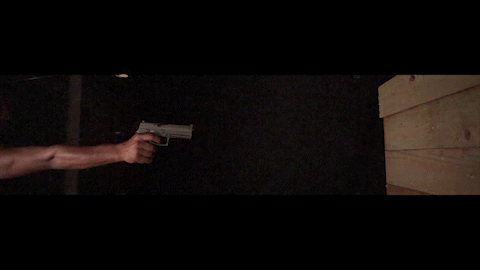Recoil Training Weapons
Many people ask about the pros and cons of using training weapons with recoil. Recoil in a training pistol is generally provided by gas (C02 or green gas). Training rifles can use gas or electric power to produce recoil. Like anything, they have advantages and disadvantages.
Advantages:
- Simulated recoil offers a realistic shooting experience
- Recoil weapons generally have working parts like slides and chargers, which work well for reload drills
- Recoil weapons are often licensed from the actual gun manufacturer, so they have a realistic weight and feel
Disadvantages:
- Recoil weapons generally use a vibration activated laser powered by a small proprietary battery that does not last long. The batteries are inexpensive but need to be changed often.
- Since the laser is activated by vibration (the recoil from the shot), there is a delay between the time the trigger is pulled and the laser is activated.
- There are more moving parts in a recoil gun that may break down over time. Electric recoil guns have less maintenance issues than gas recoil guns.
- For guns with gas recoil, magazines must be loaded with gas. This can slow down training and adds a modest monthly expense.
But there is an interesting phenomenon that occurs with recoil training weapons that many people are not aware of.
The video below shows a shooter firing a real firearm in slow motion. Notice how the gun barrel lifts up during recoil.
Compare that to the video below which shows two different airsoft guns being fired. Notice that the barrel (in both cases) points down during recoil.
The difference is that firearms force gas back while airsoft (C02 and green gas) force air forward. So even the most expensive recoil enabled training weapons do not providing accurate recoil. In fact, they produce the REVERSE type of recoil you are trying to “manage” compared to shooting a real firearm.
Most people using simulators don’t train with recoil.
Forget for a moment the maintenance issues that come with recoil guns.
There are two schools of thought. A common argument against recoil is that it is a by-product of shooting live ammo and not something to focus on. In fact, it can mask a lot of issues, and therefore not beneficial for diagnostic-training sessions. In addition, constantly training with recoil can create a problematic flinch that you want to work out during dry fire.
But as you see in the video, recoil-simulating devices produce the REVERSE type of recoil you are trying to “manage” compared to shooting a real gun and projectile.

